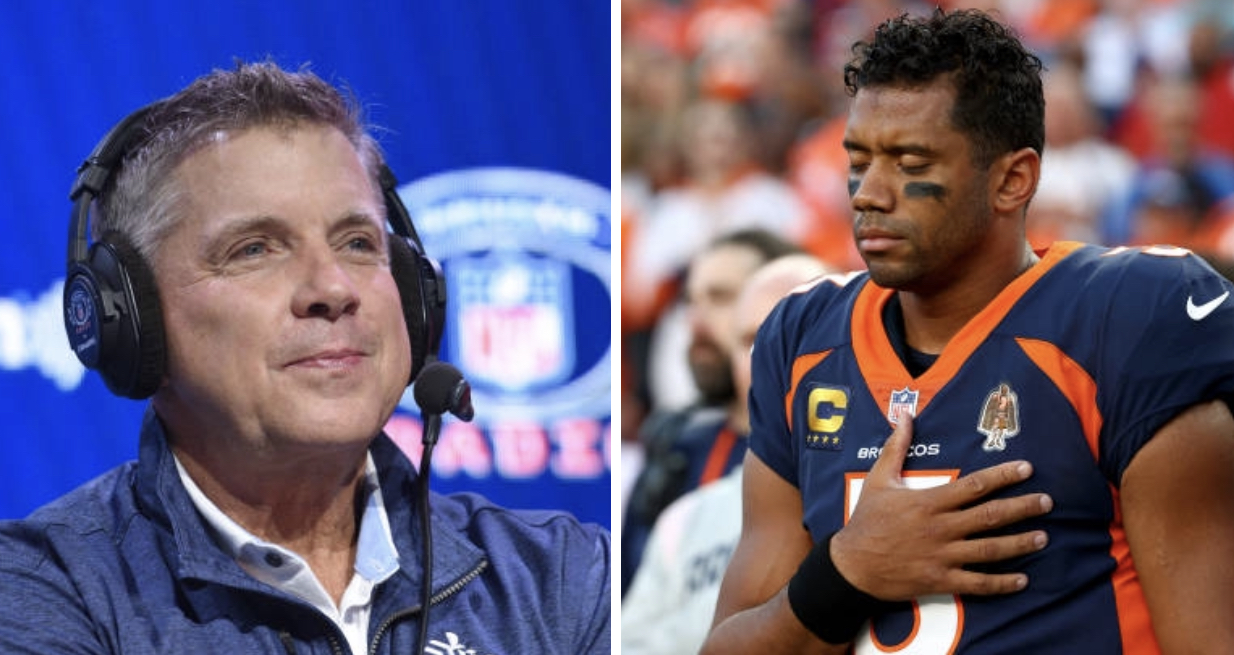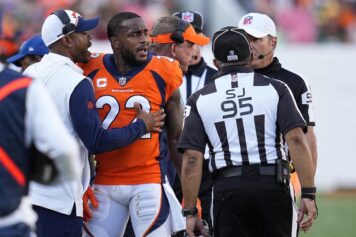If there’s anybody who had to be just more than a little giddy that Initiative 502 legalized the sale and possession of chronic in the state of Washington, it was Percy Harvin.
This week, when Commissioner Roger Goodell openly discussed the NFL looking into the possibility of medicinal marijuana use to treat injuries, Harvin's name was conjured up as the best possible test case for this experiment.
Harvin was the 2009 Draft’s Icarus. Like the Greek legend of Icarus who flew too closely to the sun, melted his wings and plummeted to Earth, Harvin got too high before the 2009 NFL Draft, tested positive for marijuana, then watched his top-10 chariot crash and burn.
The ensuing backlash related to his “blunt” demeanor pushed him out of the draft’s top 10 into the icy grip of Minnesota with the 22nd pick. Harvin lost approximately $16 million in Benjamins if you use "mediocre" Michael Crabtree’s rookie deal as a point of reference. There’s no other reason why he should have been drafted behind Crabtree and Jeremy Maclin after the versatility, quickness and explosive playmaking ability he put on display at Florida.
In Minnesota, he matriculated downfield past weary defenders like vapor in the wind, but on the downside of those quick-twitch muscles was a quick temper.

Ultimately, Harvin’s frustration seeped through in the form of animus towards former Vikings head coach Leslie Frazier and his predecessor Brad Childress, whom he nearly came to blows with.
Harvin was portrayed as a malcontent and a habitual weed head. Both are probably true. Just before the Vikings drafted Harvin, Childress used up his Air Miles to fly down to Gainesville and assess the troubled Florida receiver’s character for himself.
Through his first three seasons as a Viking, Harvin was plagued by debilitating migraines. During a practice in his second NFL training camp, Harvin passed out as a result of complications from migraine medication. It took a visit to Mayo Clinic specialists at the behest of owner Zygi Wolf for Harvin to resume his professional career avoiding bloodthirsty 250-pound gridiron hit men.
Finally healthy, Harvin was the league’s most dynamic receiver with Christian Ponder on the other end of his receptions through the first half of last season and a viable MVP candidate. It wasn't until the Vikings shut him down that Adrian Peterson began scorching the earth.
Ultimately, the Vikings traded Harvin to Seattle, which drew up a five-year, $67 million extension, in exchange for first and seventh-round picks in 2013 and a third-round selection in 2014.
Including the preseason, Harvin has played fewer NFL snaps than his college quarterback Tim Tebow during his inaugural Seahawks campaign. Conversely, Cordarrelle Patterson, Minnesota’s first round pick, mitigated the impact of Harvin’s departure.
In Harvin’s lone start against Minnesota, before his rehabilitated hip flared up, Harvin flexed his skills by reeling in a soaring pass with one hand, then returned a kickoff 58 yards. Those are the only highlights of Harvin's season where he's not concussed or staggering up after a big hit.

Harvin’s potential to emerge as an unfamiliar variable in the Super Bowl makes him a vexing figure to fans and defensive coaches alike.
"We don't really have a lot of film on him," Broncos cornerback Quentin Jammer opined. "We do know that he can line up in multiple positions. He can hurt teams from all of those positions so I think we'll start to prepare for him on kickoff and punt return because that's usually the first place he makes his mark. So we've got to make sure we get him stopped on kickoff, but as a receiver, he's just an explosive guy.
It’s bares similarities to the Patriots defense's predicament prior to Super Bowl XXXIX. Eight years ago, Dallas Cowboys safety Roy Williams’ trademark open-field horse collar tackle during a December 19th NFC East clash led to Terrell Owens tearing ligaments in his right ankle and fracturing his fibula.
Owens’ injury and Williams’ repeated horse collaring ultimately led to its banning, but not before Owens did the impossible. Seven weeks after suffering what should have been a season-ending injury, Owens caught nine passes from McNabb for 122 yards and played 72 of 82 snaps in the Super Bowl. #NoDeerSpray
Owens’ role as the Hope Diamond amid McNabb’s Salvation Army receiving corps draws parallels to Harvin’s intended function as Russell Wilson’s featured receiver on a team with a terrestrial offensive scheme out of necessity. Taking advantage of this opportunity is pivotal.
Canton-bound Randy Moss and Owens both retired without Super Bowl rings to floss. McNabb only benefitted from throwing to a Pro Bowl target for 21 games in his 13-year career.
As candidly as their receivers express themselves or mediocre they are perceived to be as a unit minus Harvin, Owens couldn’t make the cut. Thus his final run at a title evaporated after Carroll cut him following the third game of the 2012 preseason.
Owens’ unceremonious dismissal with the Seahawks was due more to his penchant for drops—Seattle recorded the fewest in the league this season—than with any cameo appearances of his cantankerous diva personality. At the least, he could have provided locker room wisdom as the only Seahawk with Super Bowl experience.
Labeled a head case with diva qualities for much of his young career, Harvin has mellowed out in Seattle without toking up during the season due to the NFL’s antiquated drug policy. Catching a whiff of the hazy streets of Seattle hasn’t been the most anguishing aspect of his season on the sidelines though.
Hip injuries and concussions have limited Harvin to 38 snaps in two games since last November 4. Earlier this season Harvin also disclosed an appendectomy in November 2012 plus an offseason tumor removal.
Harvin’s long-term health is a toss-up, but the potential is there to make a T.O.-type impact for Seattle’s modest aerial offense. In a league where coaches and teams derive more from watching film than a New York Times movie critic, Harvin’s absence gives the Seahawks an element of surprise.
“I definitely think I can be a factor in this game,” Harvin told the NFL Network. “The concussion was an unfortunate situation that I wish hadn’t happened, but I’m ready to play football.”
"Trust me, I won't leave anything in the tank," Harvin added on Media Day.
Seattle’s receivers haven’t been feeling much love from the media minus Harvin, but if their $67 million man can lace ‘em up for four quarters on Super Bowl Sunday, the Wilson-Harvin connection has the potential to pick the Broncos defense up, Suge Knight style and drop ‘em on their own heads.
Paercy Harvin is Denver’s headache now.



